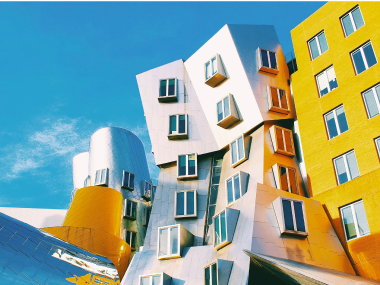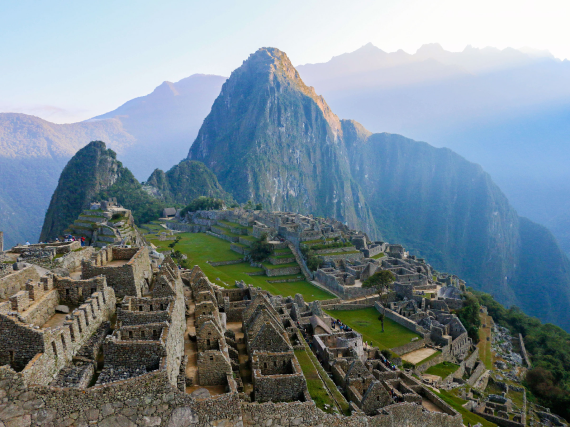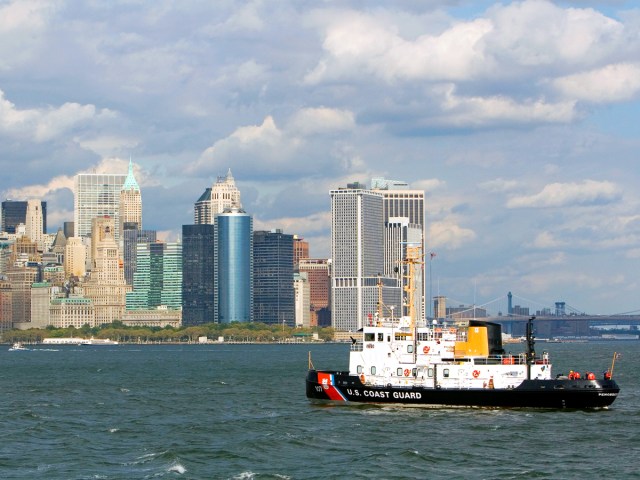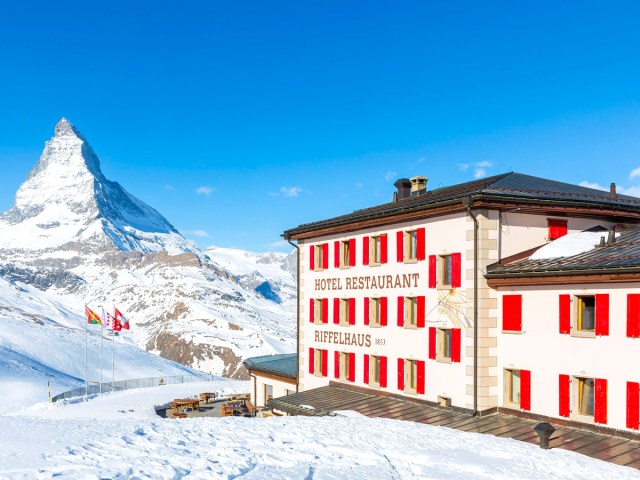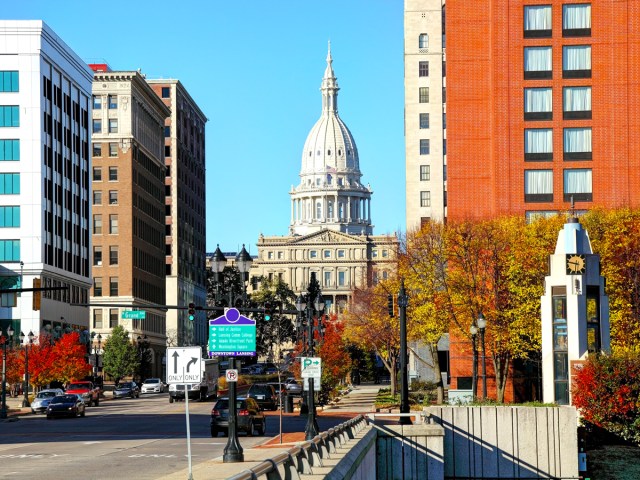Thinking of visiting Spain soon? You won’t be alone. In 2024, the European country welcomed a record 94 million tourists — making it the second-most-visited country in the world behind France. From stunning Moorish palaces to world-class museums and gastronomic capitals, check out eight of our favorite places to visit in Spain.
Park Güell – Barcelona

Like so many of Barcelona’s iconic sites, Park Güell was designed by Antoni Gaudí — the city’s resident design visionary and one of Spain’s most famous architects. Constructed between 1900 and 1914, the 45-acre urban utopia is located on a hillside with sweeping views of the city below. The area was originally conceived as a subdivision of 60 private villas for wealthy Barcelonians, but the neighborhood never took off, and only two structures were ever constructed — a model home and a guard’s house. The land was turned over to the city and opened as a municipal park in the 1920s.
While the views, plantings, and pathways of the park are undoubtedly lovely, what makes this place truly special are Gaudí’s whimsical installations. Highlights include the scalloped and tiled perimeter fencing, a monumental bench built to resemble a giant sea serpent and encrusted in bold ceramics, and a colorful salamander sculpture at the entrance known as “el drac” (“the dragon”). The main terrace is surrounded by winding paths, curving viaducts, formal gardens, and specimen trees — with a warren of palm-like columns supporting an amorphous tiled roof.
The park’s original model home ended up being Gaudí’s family home, and the bright pink villa is now a museum — another must-see in a city park brimming with his wonders. And don’t leave Barcelona without visiting another one of Gaudí’s most famous and enduring landmarks, the (still-unfinished) La Sagrada Família — which finally has a completion date.
Guggenheim Bilbao Museum
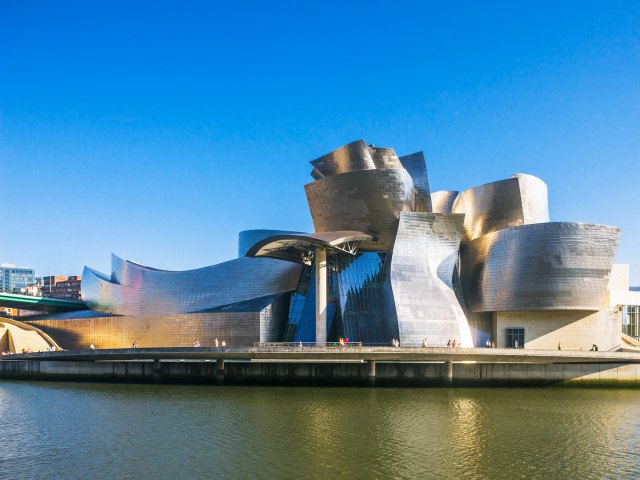
When it opened in 1997, this curvilinear titanium masterpiece by architect Frank Gehry may not have technically put Bilbao on the map — the city’s position on the Nervión River near the Bay of Biscay has assured the port’s significance for centuries — but the museum quickly exerted what experts termed “the Bilbao Effect.” It refers to the ability to turn a once-overlooked city into a tourist hotspot with trophy architecture.
In the case of the Guggenheim Bilbao Museum, more than 1.3 million visitors arrived in 2024 to behold the waterside museum’s famed swirls and the galleries therein. The permanent collections include major works by Jenny Holzer, Richard Serra, and Jeff Koons, among many others. But perhaps the most recognizable sculpture, which accessorizes many a shot of the museum’s exterior, is the spindly spider known as Maman, by Louise Bourgeois.
Old Town of Segovia and Its Aqueduct
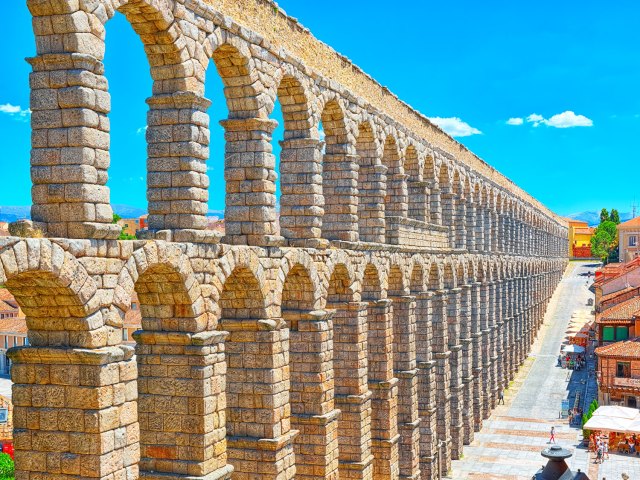
A relic of the Roman Empire, the Aqueduct of Segovia has balanced over its namesake Spanish province for nearly two millennia. Made from 24,000 granite blocks and not an ounce of mortar, the aqueduct (situated an hour north of Madrid) still fetches water from the Frío River, located 10 miles away. Its above-ground section measures almost 2,400 feet long, stretching across about 165 perfectly composed arches; in some places, the aqueduct soars more than 93 feet high in two tiers of arches. Along with Segovia’s beautiful old town, the aqueduct has been designated a UNESCO World Heritage Site since 1985.
While historians estimate that the aqueduct was built during Emperor Trajan’s reign, sometime around 50 CE, folklore disagrees. According to a popular legend, a Segovian servant wanted to eliminate her daily journeys to the mountains to gather water, so she offered her soul to the devil if he could engineer an alternative by morning. Allegedly, a rooster crowed just before he put the final brick in place.
Seville Cathedral
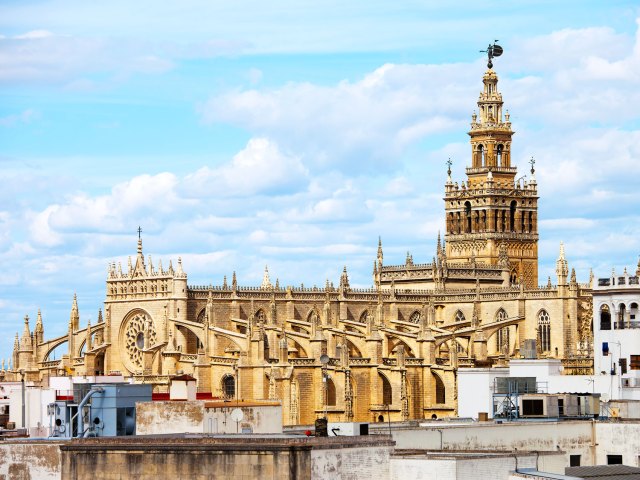
A dazzling display of the wealth that emerged in this southern Spanish city (now the capital of Andalusia) after the Reconquista years, Seville’s cathedral remains the largest Gothic building in Europe. Following the defeat of Moorish rule in the 15th century, Seville city leaders ordered the construction of the cathedral (officially named Cathedral of St. Mary of the See) to show off the expansion of Christianity throughout the Iberian Peninsula.
The cathedral stands on the site of a former mosque, and upon its completion in 1506, it overtook Istanbul’s Hagia Sophia as the world’s largest cathedral. (While it no longer holds that title, it’s still the third-largest cathedral in Europe.) One of the cathedral’s most distinctive architectural features — a 343-foot-tall minaret called the Giralda — is a nod to its former purpose. Another famous feature lies deep within: The cathedral is also the final resting place of explorer Christopher Columbus. Together with Seville’s Alcázar royal palace and the city’s ancient merchant exchange, it was named a UNESCO World Heritage Site in 1987.
San Sebastián
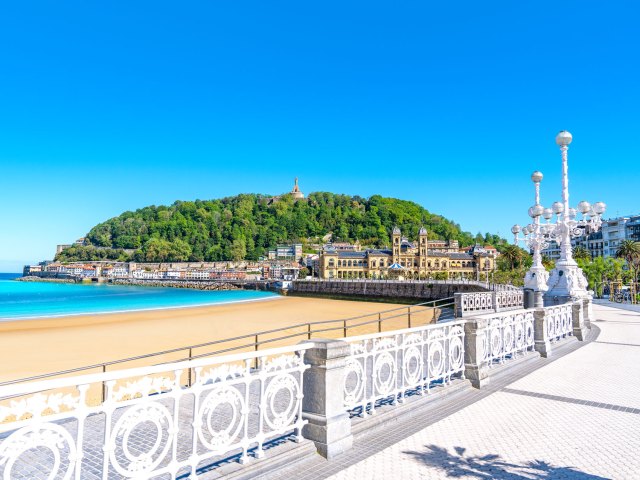
In a city of around 180,000 residents, San Sebastián’s restaurants have amassed 12 Michelin stars, as of 2025, making it one of Spain’s (and Europe’s) most exciting culinary destinations. But before this coastal city evolved into a foodie haven, this region of northern Spain’s Basque Country — known in the local Basque language as “Donostia” — served as a 13th-century seaport on the Bay of Biscay, dispatching cargo to both the Americas and greater Europe.
Although the city was badly damaged in 1813 during the Peninsular War, in the following decades, Queen Isabella II adopted San Sebastián as a summer home. And it’s easy to see why: Located about 15 miles from the French border, San Sebastián’s landscape flaunts multiple coastlines — including Playa de la Concha, arguably Europe’s most exquisite urban beach — and three verdant mountain peaks: Monte Igueldo, Monte Ulia, and Monte Urgull.
Alhambra Palace – Granada
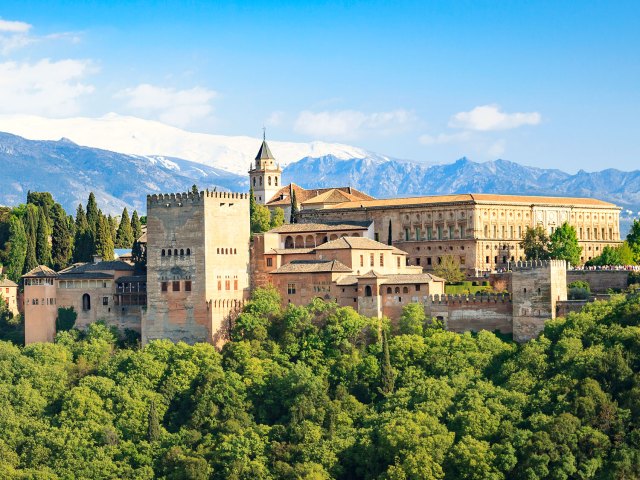
Towering above the city of Granada, in Spain’s southern Andalusia region, is the stunning Alhambra, whose name translates to “Red Castle” in Arabic. Named for its red-colored walls, Alhambra stands atop the Sabika hill alongside the Darro river. The fortress, now a UNESCO World Heritage Site, was placed there strategically to overlook the city and meadow beyond.
Early records of the Alhambra date back to the ninth century, but it was Mohammed ben Al-Hamar (Mohammed I) who had the royal residence constructed within the fortress during the 13th century. Today, the spectacularly well-preserved palace, which features a distinctive watchtower and water canals fed by the nearby river, welcomes more than 2.6 million annual visitors.
Prado Museum – Madrid
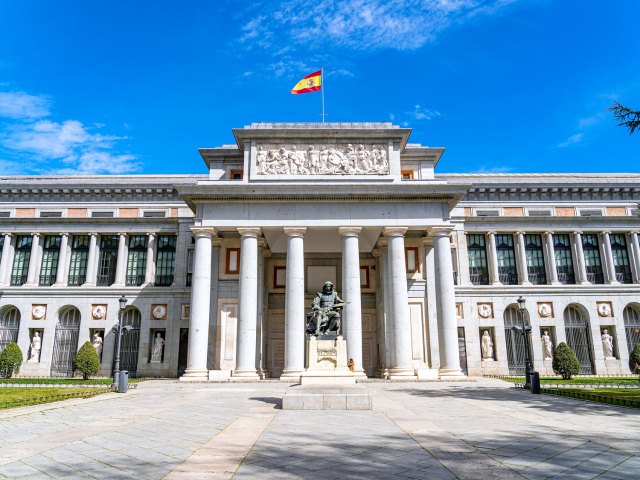
The Prado Museum is home to the world’s greatest collection of Spanish art, featuring masters like Picasso, El Greco, and Goya. The museum was built in 1785 and was originally intended to be a showcase of natural history, but King Ferdinand VII later decided to make it a museum of art. It went through several name changes, before becoming the Museo Nacional del Prado in 1868. The name translates to “National Museum of the Meadow,” a reference to the meadow on which the museum was built. Around 3 million people visit the museum each year, one of the three museums to form Madrid’s “Golden Triangle,” along with the Reina Sofía and the Thyssen-Bornemisza art museums.
Teide National Park – Canary Islands
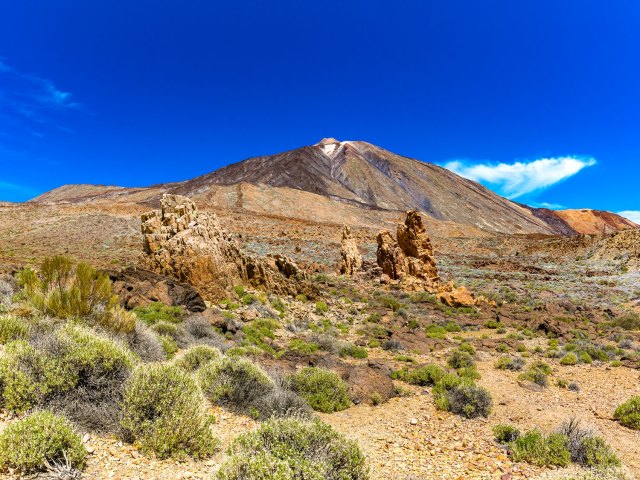
Though it’s considered Spain’s highest peak, Mount Teide is exponentially closer to Africa than to Europe. Positioned about 200 miles off the southwest coast of Morocco and 800 southwest of Spain, this volcano — one of the tallest in the world — rises almost 12,200 feet from the heart of Tenerife in the Canary Islands, a Spanish territory.
The surrounding national park, also a UNESCO World Heritage Site, blends volcanic boulders with petrified lava rivers, steaming vents, and gaping craters, among other surreal elements. But one of the most otherworldly natural attractions is in the air: Every so often, a so-called “sea of clouds” moves in, enshrouding the peak in an extra layer of drama.
More from our network
Daily Passport is part of Inbox Studio, which publishes content that uplifts, informs, and inspires.
